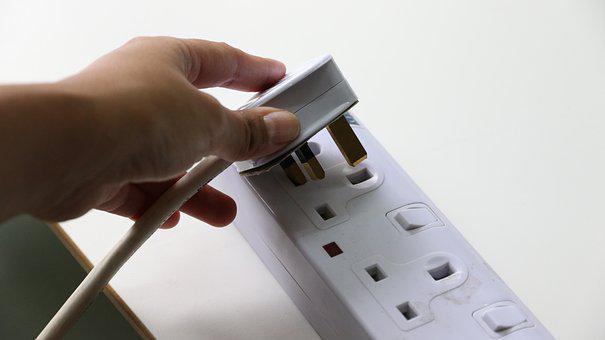Is Standby Power Drain Costing You Money?
 Note: We may embed some sponsored links that can earn us a commission to defray operating costs for this website.
Note: We may embed some sponsored links that can earn us a commission to defray operating costs for this website.
Is standby power drain costing you money and wasting electricity? You have probably read that plugged in chargers, adapters, appliances, and electronics still consume power even if they’re not in use. Sure, your TV still needs to consume some power to respond to the remote when you turn it on. Similarly, plugged-in chargers still drain some power even when they’re not connected to your phone.
How Much Does Standby Power Drain Impact Electric Bills?
In the past, studies reported that standby power drain might account for five to ten percent of an average home’s power consumption. However, Verd Energy says that those outdated studies exaggerate today’s problem. New regulations have compelled manufacturers to design products to use energy more efficiently, even when they’re technically turned off or hibernating.
Thus, a better estimate of standby power drain might on an average residence might range from .5 to 1 percent. For typical electric bills, standby power probably costs far less than taxes and fees.
Thus, typical households should first focus on efficient heating and cooling to make the largest gains. Investing in energy-efficient appliances, lighting, and devices can make a bigger impact than worrying about unplugging the TV when it’s not in use. Insulation, sealing drafts, and smart thermostats can also help reduce power consumption dramatically.
Does Standby Power Drain Matter?
The US Department of Energy actually posted the five-to-ten-percent figure that Verd Energy disputed as outdated. Since there’s no date on the page, it’s hard to say when the government published these figures. Even if the DOE’s figures might look a little high, they did offer some good tips to reduce standby power consumption.
If everybody takes small steps to reduce power waste each day, it will add up, so these tips deserve a look:
- Use a power strip: A surge protector, like the one we highlighted in our money-saving gadgets article, can make it easy to shut down TVs and audio systems when not in use. They also offer the additional benefit of protecting valuable electronics against power surges. You can easily unplug and plug back in multiple appliances with the touch of a button, and you can even control smart power strips with your smartphone or home automation system.
- Unplug unused appliances and electronics: You might unplug certain products, like TVs and printers, if you don’t use them frequently. In this case, the benefit of reducing power consumption might outweigh the inconvenience of plugging them back in and waiting for them to boot. Certainly, turn these devices off if you plan on leaving for vacation.
Energy-Saving Priorities to Conserve Electricity
Overall, you’ll probably save more energy and money by investing in better attic insulation, insulating window treatments, and when the time comes, Energy Star appliances. A smart thermostat that helps you keep your heating and cooling running most efficiently might pay for itself in lower power use and a more comfortable home within a few months.
You could also engage your family in some frugal and educational DIY alternative energy projects or even look into commercial alternative energy. Standby power drain is an issue that you should remain aware of, but it’s probably not the primary reason that typical homes waste electricity.
